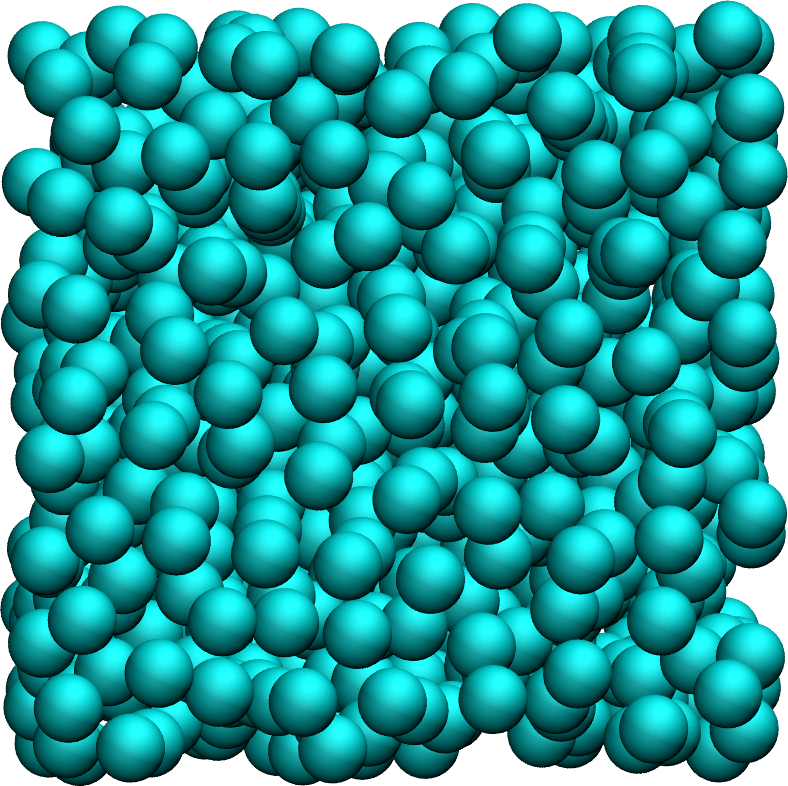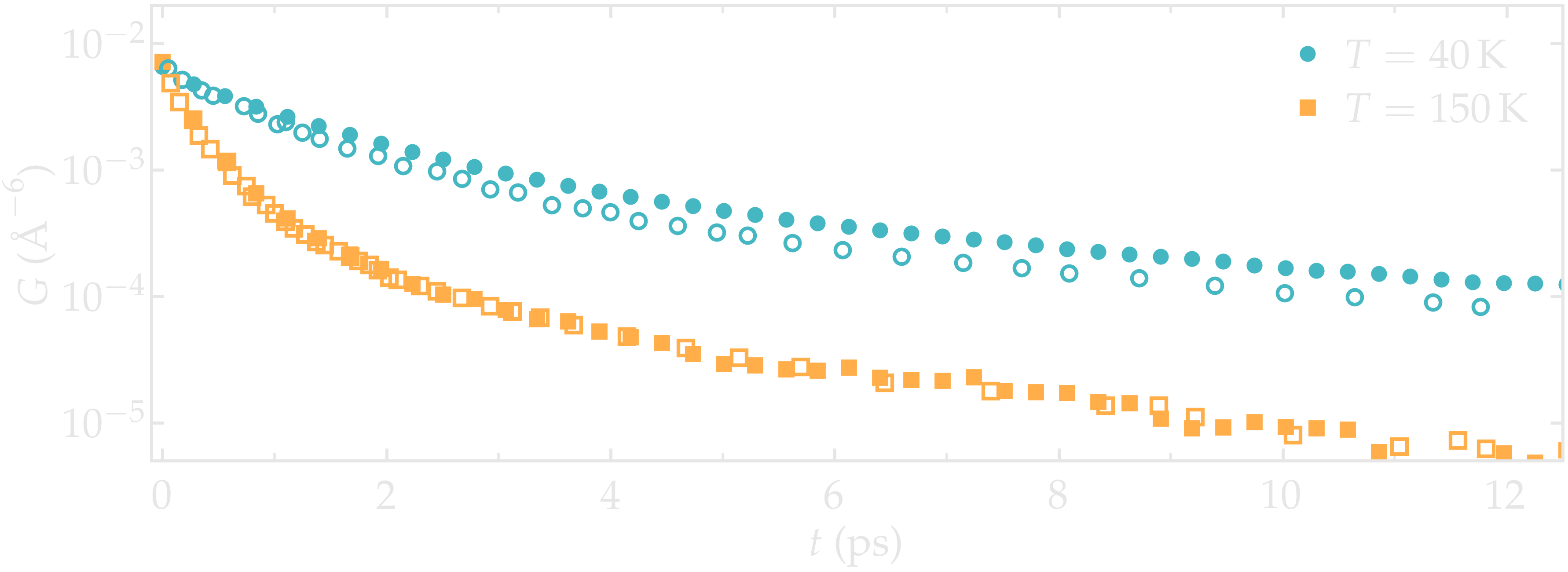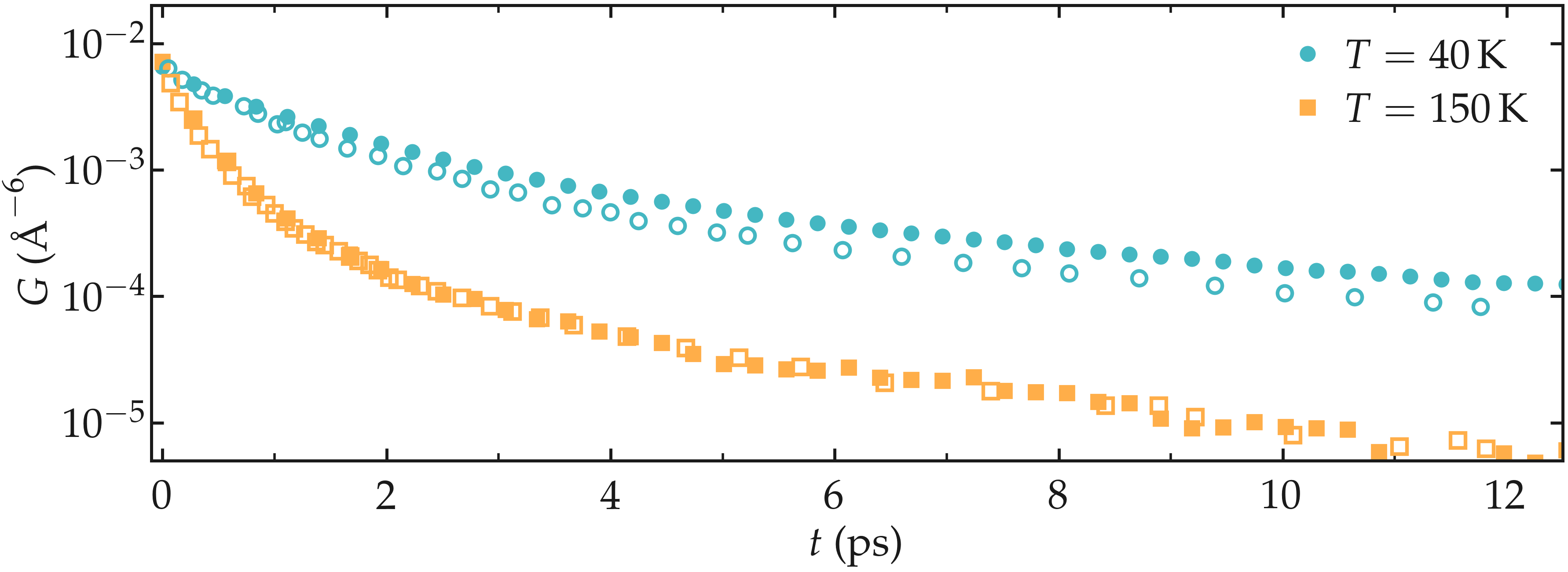Lennard-Jones fluid#
Measuring the NMR relaxation time from a Lennard-Jones fluid
MD system#


The system is made of 1638 particles interacting through the classical Lennard-Jones (LJ) 12-6 potential with a cut-off of \(9\,\text{Å}\). Each particle was associated with a mass \(m = 1\,\text{g/mol}\), and LJ parameters \(\sigma = 3\,\text{Å}\) and \(\epsilon = 0.1\,\text{kcal/mol}\). The volume of the box \((37.5\,\text{Å})^3\) was chosen to match the density of the paper by Grivet [1]. Calculations were made at constant volume and energy, in the NVE ensemble. The total duration of the simulation was 11000 steps, and the data were recorded every 10 steps with a timestep of \(1.16\,\text{fs}\). The imposed temperatures were ranging from \(T = 30\) to \(160\,\text{K}\).
The parameters were chosen to match the reduced parameters used by Grivet [1], namely a reduced temperature ranging from \(T^* = 0.8\) to 3.0, a density \(\rho^* = 0.84\). Note however, a smaller number of particles was used, as well as a smaller timestep, and a slightly longer cut-off.
Results#
The correlation function \(G^{(0)}\) was first extracted for two temperatures, \(T = 50\) and \(140\,\text{K}\), and compared with the correlation functions reported by Grivet [1]. Our results show an excellent agreement with the results from Grivet, thus validating the NMR formalism used here as well as the LJ system and parameters.


Figure: Correlation function \(G^{(0)}\) as extracted from the LJ fluid simulation for two different temperatures, and compared with the data from Grivet [1] (open symbols).
The NMR relaxation rates \(R_1\) and \(R_2\) was also extracted for all the temperatures, at a frequency \(f_0 = 150\,\text{GHz}\). Our results show a good agreement with the data from Grivet [1].


Figure: NMR relaxation rates \(R_1\) and \(R_2\) at a frequency \(f_0 = 150\,\text{GHz}\). The data from Grivet [1] are shown with open symbols.